Cate McGregor was Queensland Australian of the Year in 2015. AWW sat down with Cate in 2015, Cate was then a Group Captain in the RAAF. Here is her remarkable story.
There is an old saying, sometimes attributed to Dr Seuss, about how you should give up pretending and just be who you are because:
Those who mind don’t matter
And those who matter won’t mind.
Easier said than done, of course, especially when you’re keeping a secret as significant as the one that Lieutenant Colonel Cate McGregor – formerly Lieutenant Colonel Malcolm McGregor – kept for nigh on 50 years.
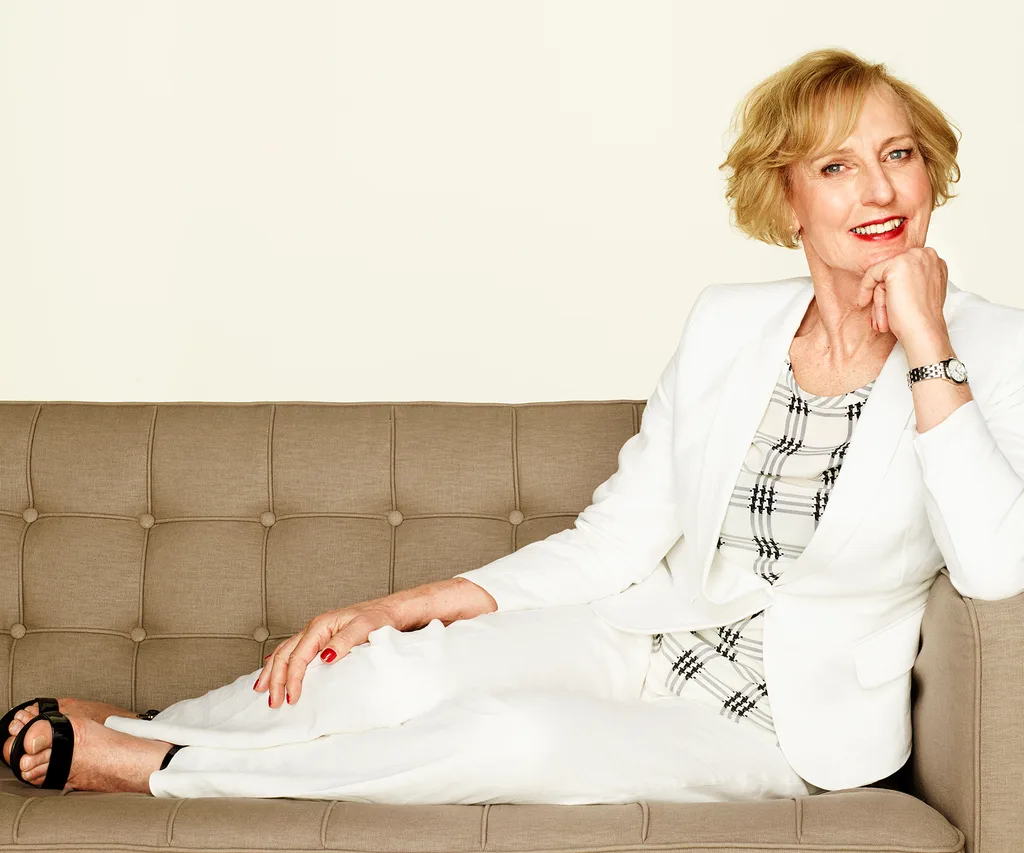
Cate McGregor kept her urges to be a woman a secret for 50 years. Photography: Michelle Holden Styling: Mattie Cronan
Cate was born a boy but she always felt like a girl. She tried to hide it, at first by getting drunk, and later by flexing what she saw as the masculine side of her personality, as a soldier in our armed forces but, she says, ‘it got to the point, in my mid-50s, where I could not stand it anymore.
“The sense that I should be living as a woman was overwhelming. I could not get a moment’s peace from that idea. I started having panic attacks. It was either face up to it, or suicide.”
And so, a little over two years ago, Cate began having what she describes as the toughest conversations of her life. Her parents had already died, but Cate – or Malcolm, as she was then – was married, so her wife had to be told, as did her boss, who is the hyper-masculine, khaki-clad Chief of Army, David Morrison AO.
Then there was the fact that one of Cate’s closest friends – a man she’d played rugby with – is the Prime Minister, Tony Abbott.
“I knew I’d have to tell him,” she says, “because our friendship is one of the oldest, most continuous friendships of my life.”
And what did Abbott say?
“I got the most loving response,” says Cate, delighted. “He said, ‘look, it changes nothing.’ Then he said, ‘what’s your preferred name now?’ And ever since, he’s called me Cate.”
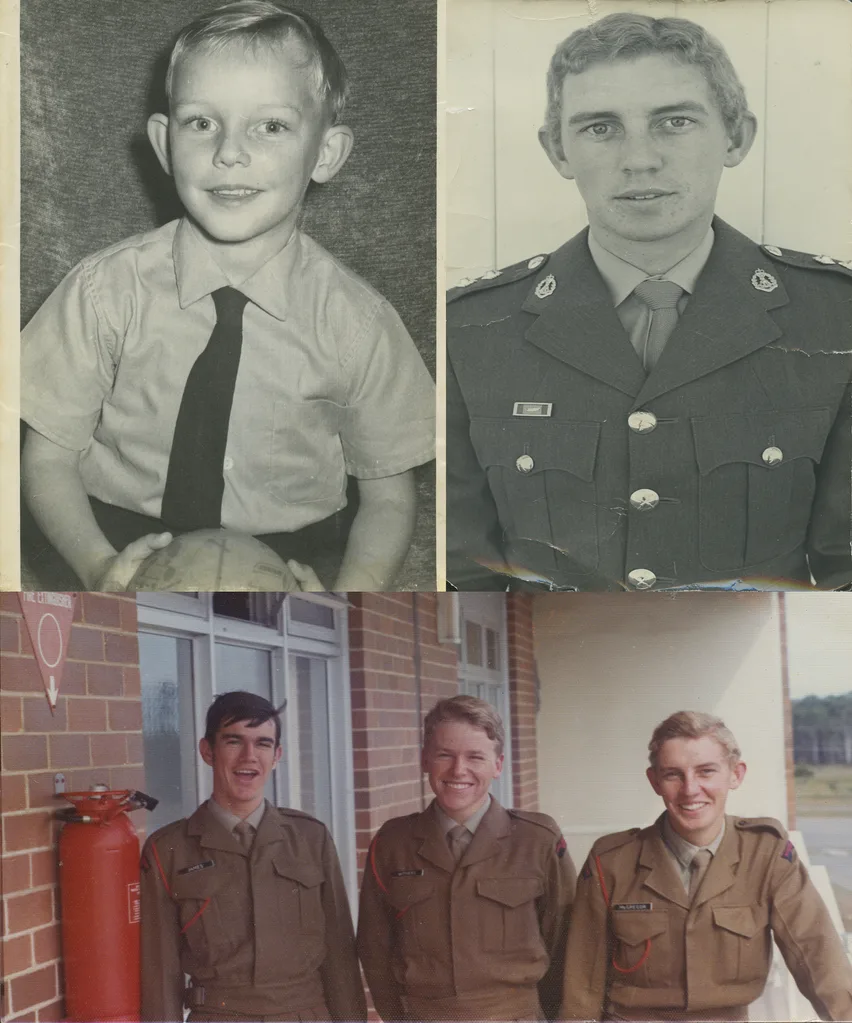
After 56 years living as a male, Cate – formerly known as Malcolm McGregor – made the decision to embrace the gender she most identified with – female.
It must be wonderful to go through life, always being sure and never being fearful, but it’s not really human, is it?
It’s much more human to fret and worry, and these Cate has done.
As hard as it now is to believe, Cate was born Malcolm McGregor in Toowoomba, Queensland in 1956, and she had misgivings about her gender from the earliest age, but could not find a way to express the idea.
“I was fascinated with women’s clothes, but I’d tried on Mum’s dresses and I’d gotten into awful trouble, so I never did it again,” she says. Cate’s father died when she was eight, and a fear of abandonment as well as confusion about her gender settled into her bones.
“There’s no way I can explain it. I simply felt uncomfortable – terribly, horribly uncomfortable – being me,” says Cate.
Cate’s sister, Mary Saunders, who is 16 years older, says her memory of Cate as a little boy are that “she was very shy and quite timid. But I never suspected her troubles with gender. And I have been thinking, maybe Cate being so brilliant and successful at everything masked her inner turmoil.”
Cate was smart-as-a-whip at school, and probably could have done anything, but because her father had fought at Kokoka, and her grandfather at Fromelles, she joined the Army at the earliest possible opportunity, in 1974.
“It was a way of connecting with my father,” she says,”and I had an idea about the military being the ultimate expression of masculinity. But I wasn’t thinking, this will make me a man. It wasn’t as conscious as that”
The then [2015] Chief of Army, David Morrison AO, remembers meeting the young Malcolm McGregor in 1980, when they served together in an Infantry Battalion in Brisbane.
“I was the new boy, recently graduated from the Officer Cadet School, Portsea, and Mal was a Duntroon graduate of two years before,” he says. “The relationship was strong but brief. Mal was promoted to Captain and, in that contrarian way that has surfaced from time to time in his life, promptly left the Army.”
Looking back now, Cate says she did so “in a fit of pique, and as an alcoholic.” She was quite certain that she could make her mark in the Army – perhaps become a General – but she had “a restless disposition. I was very ambitious, but there was no war on, and promotion was slow. I was drinking a lot, and I was arrogant, and I thought, I can do better than this, and I’m out of here.”
Cate’s appetite for self-destruction- especially her heavy drinking – led her to a counsellor and, in 1985, she was diagnosed as ‘transgender’ (somebody who feels they’ve been assigned the wrong gender at birth.)
“The idea of living as a woman was enthralling, but the fear of losing relationships – and my career – was too great,” she says. “I had no experience of transgender women, except as showgirls on the fringes of the sex trade. I didn’t know anyone who was a lawyer or an Army officer.”
The only option, she thought, was to white knuckle through the diagnosis. Cate quit drinking in 1990, joined a law firm, and from there went into politics, working for (and falling out with) both the Labor Party, and the Liberal Party (as Malcolm McGregor, Cate worked for the former NSW premier, Bob Carr, and as a consultant to the former Liberal leader, John Hewson.)
When politics finally spat her out, the then-editor of the Australian Financial Review, Greg Hywood, picked Malcolm up, as a political correspondent.
“I was doing everything I could to hold things together,” says Cate, “but in reality, I was in a state of endless anxiety. From about 1989 onwards, I was trying so hard to answer the question: who am I?”
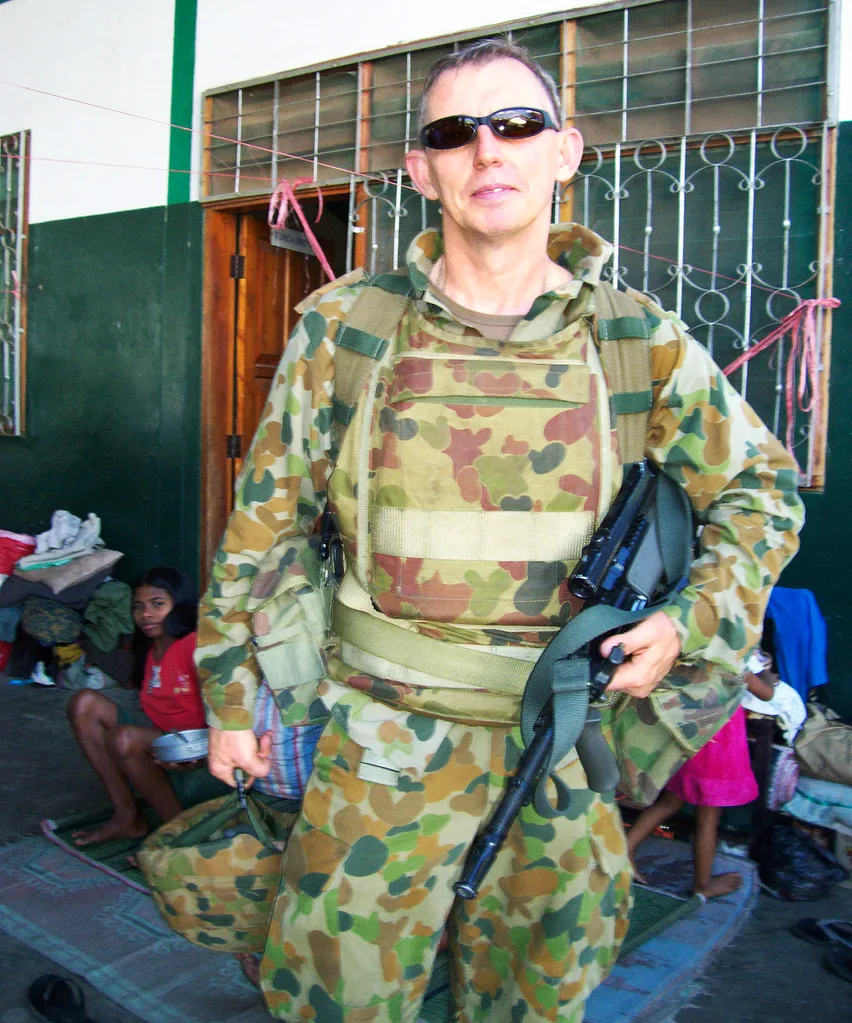
Malcolm McGregor in uniform while serving in East Timor.
In 2000, she reversed her decision to quit the Army, re-joining in time to lend a hand in Timor.
“There was a tranche of officers who joined between the late 1970s and the early 1980s who never went to war,” she says, “and some of us felt that we weren’t proper soldiers, because we did not have ribbons on our shirts.” Her service in Timor – still as Malcolm – “resolved something for me. But the deep disquiet – the questions I had about myself – did not go away.”
In 1995, Cate met the woman who became her wife – she has asked The Weekly not to reveal her name, or refer at all to her experience of their relationship – and says “from that day on, I was deeply in love. I had met my soul mate, the person I was meant to be with, and I adored her to bits. (At the time, the two were still working through their hurt, and remained friends).
“But by 2011, I was in very bad shape,” Cate says. “I was boiling over with the idea that I was living the wrong gender. I can’t convey – I don’t have the language – to explain what it was like to live in that turmoil, but it was a nightmare, I could barely sleep. I was dramatically losing weight. The monomaniacal thought that I was meant to be a woman – that persistent conviction – never left me. I did not get a second of rest from that idea, and it feels like you’re going to explode.”
She went back to the psychiatrist who said: “It’s a no-brainer. You are transgender.”
“I was waiting for somebody to say, here, take this pill, and it will all be fine,” says Cate, “and he said, it won’t be fine. Can’t you see that? I said, but I’m an infantry officer, I’m married, it’s too late, I’m 50-something years old, it’s not an option. He said, I’m puzzled you’ve got this far.
“But I was still so scared. I thought, my fate is to be a tragic figure, socially ostracised. And that was frightening, but the greatest loss would be my marriage. I knew I would lose my wife, and I was completely in love with her, and it broke my heart.”
Cate’s wife was of course the first person she told, and details of that conversation remain private. Her sister, Mary, was “absolutely stunned, but decided that, no matter what, Cate is still my flesh and blood, the same beautiful human being, and I wanted to be there as a strong support.”
Then came Cate’s immediate boss – then Chief of Army, Lieutenant General Morrison who, in case you’re wondering, is not very smiley, and wears combat fatigues. “I was really taken aback as I had no inkling that this was the over-riding issue in (Malcolm’s) life,” says Morrison. “I thought about it, but only briefly, before I concluded that this was the time to step forward and provide support.
“She is my mate. I don’t care what the person I used to know as Mal looks like now. I do care, and deeply, about her wellbeing.”
Next came selected friends. Besides being a soldier, Malcolm McGregor was a brilliant young cricketer, and more lately has written about cricket for newspapers and magazines. Some cricket friends were told directly; others received the final pages of Malcolm’s recent book, An Indian Summer of Cricket, in which she revealed that while Malcolm had written the book, Cate would be attending the launch.
The response from all was pretty much the same: surprise, followed by immediate acceptance, and even, from one colleague: “Well, thank God, because from the way you looked, I thought you were going to tell me it was something serious, like cancer.”
The sex discrimination commissioner at the time, Elizabeth Broderick, had Cate over for dinner, and says: “She’s one of the most courageous women I know. My family felt privileged to meet her. I am thankful to Cate for personalising her experience and explaining it in terms the kids could understand, broadening their horizons and reinforcing just how important it is to accept people for who they are.”
Then Prime Minister, Tony Abbott was likewise filled with admiration.
“We first met when we were in our early 20s and we’ve known each other quite well for more than 30 years and very well over the last decade,” Mr Abbott tells the Weekly, “of course, Cate’s been through a very difficult transition in which a lot of friendships have been tested. For my part, I really admire her honesty, her strength and the fact that she’s been prepared to embark on what must have been an utterly daunting journey. I regard myself as blessed to have such a friend.”
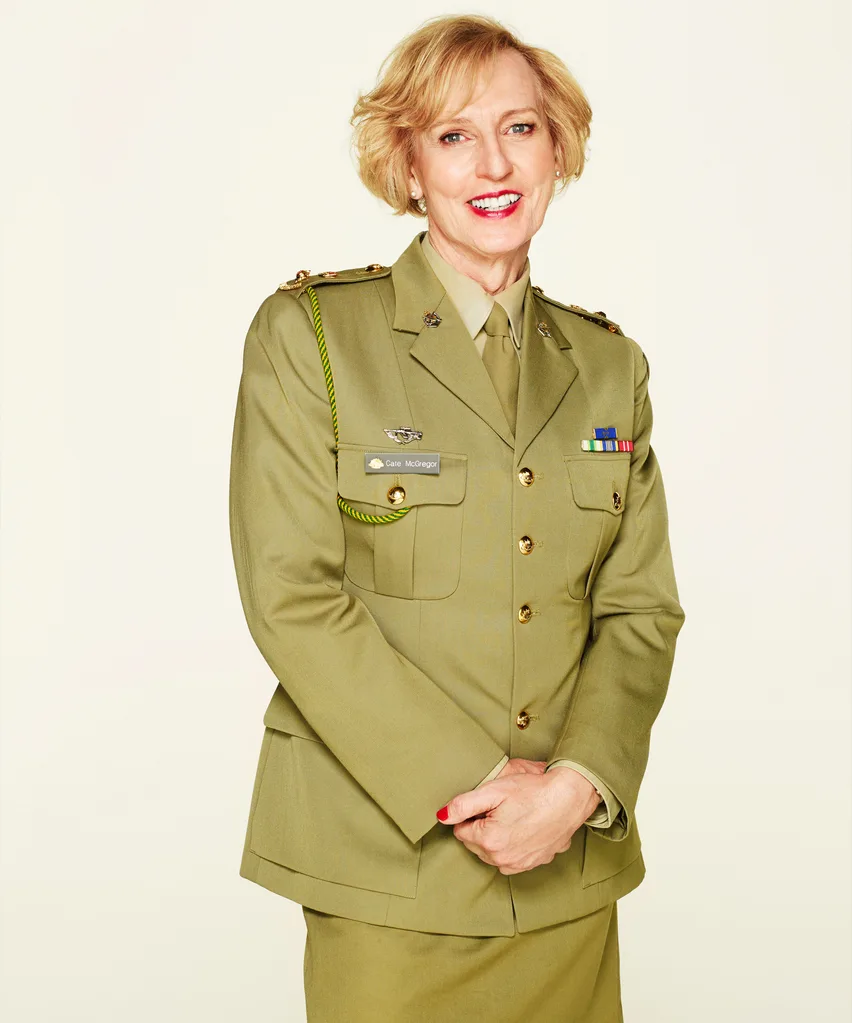
Following the leave from the Army in June 2012 Cate McGregor returned to her position with a new uniform and gender.
And so, in June 2012, Malcolm took leave from the Army, and began taking a testosterone blocker, and an oestrogen supplement. She stopped cutting her hair, changed her name to Cate, and in September of the same year, she returned to work with a khaki skirt, and red manicure.
Of course, there are still people who say, whatever floats your boat, but Cate isn’t a woman, because she doesn’t have a vulva. She has male chromosomes. She has no ovaries, and no uterus, and she will never menstruate.
To be clear, Cate agrees: she isn’t saying that she is a woman, either, only that she lives as one.
“My experience of what it’s like to be a woman is obviously different to that of a born-woman,” she says, “but I express my gender as female.” She holds a female passport, and a female driver’s licence. She has not changed her birth certificate, and says she may not because, “in a funny way, I feel my Mum and Dad thought they had a little boy, and they called him Malcolm, and at this stage, I don’t feel the need to unscramble that.”
Before starting on oestrogen, Cate feared she’d never become what she calls ‘passable, as a woman’ but the hormone worked its magic. She became slimmer, and her shape was more feminine: there is a curve to her hip, and she does need a bra. She arrived for the shoot for the Weekly in heels, and red lipstick. She was a little anxious about her arms – they’re ripped – but joked about it, saying: “Here’s a tip – if you’re going to transition to a woman, don’t do it after spending 45 years in the gym.”
“This is an important day for me,” she said, “It’s of such symbolic acceptance, to be embraced as a woman by the Australian Women’s Weekly – I’m tickled pink.
“I used to fear that nobody would take me seriously, and to go to the shop, to pick up the newspaper, and to have somebody say ‘Ma’am’, it’s bliss. The first time, it’s like a bolt of electricity goes through you. Now it happens routinely and to me, it means that people are taking my claim to femaleness seriously.”
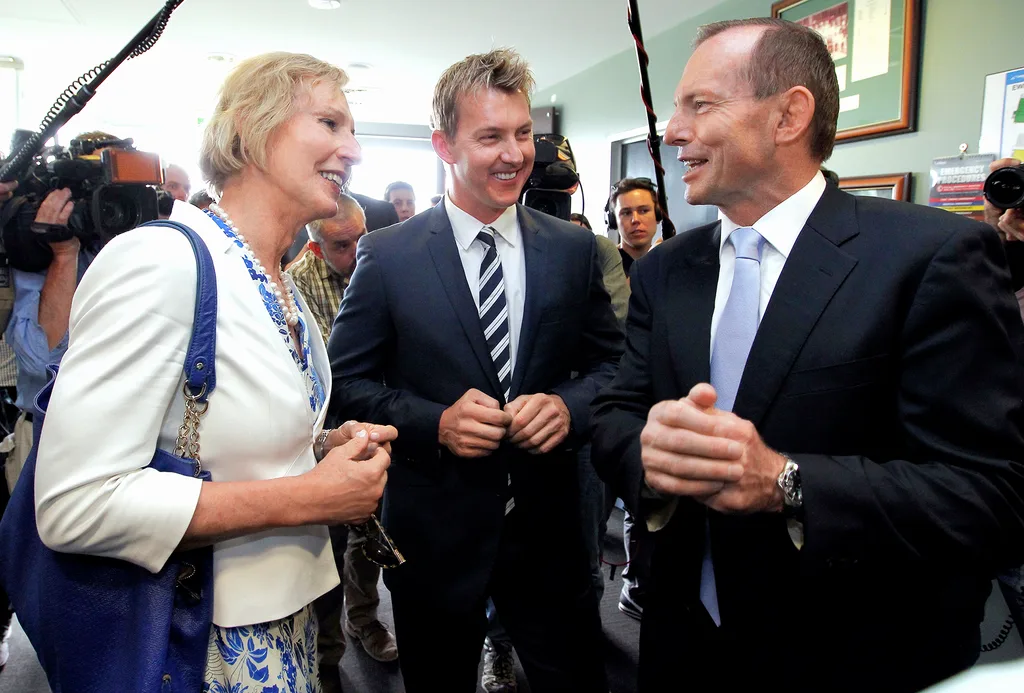
Cate McGregor with her close friend Prime Minister Tony Abbott and cricketer Brett Lee at the launch of the PM’s XI, in December 2013.
There is an operation – gender re-assignment – that involves the removal of the penis and testes, and may also involve breast implants, and facial surgery to soften the jaw.
There’s also quite a bit of maintenance involved (transgender women generally have to use a stent or dilator three or four times a day after surgery to keep the new vaginal cavity open; plus, the new vagina won’t self-lubricate.) There would be obvious benefits: Cate would be able to sit down to pee, and wear a swimsuit without getting strange looks (she loves to swim); and, in theory, she should be able to have penetrative intercourse with a man, and probably reach orgasm.
On the other hand – and given Cate’s euphoria at her transition, it feels mutinous to even bring this up – there is a phenomenon known as ‘sex change regret’ in which people who have the operation desperately wish they hadn’t. The most famous Australian case of ‘regret’ is probably that of the ‘Boy, Interrupted’: Alan Finch, a coal miner’s son, had sex change surgery at age 21 to become Helen, and bitterly regretted it. Alan featured in an episode of the ABC’s Australian Story in 2003, with his psychiatrist, the Melbourne-based Dr Byron Rigby, saying that he’d never been transgendered, merely confused about having grown up without a father figure. He went back to living as a man, but without a penis (The Weekly tried to find Alan, but could not.)
There’s Mike Penner, a well-known sports writer for the Los Angeles Times who took time off work in 2007 and returned as Christine Daniels, saying that her transition to female had bought her “more joy and fulfilment than you ever imagined possible.” Christine gave speeches to transgender groups, was profiled in Sports Illustrated, and wrote a blog for the Times, called
A Woman in Progress but, after two years, she again took time off and returned to the sports pages as Mike. The change was never explained, and the story doesn’t end well: Mike committed suicide in 2009 with the exhaust from his car.
Cate is an avid reader, and she has an open, curious mind. She understands that ‘sex change regret’ is a real phenomenon, and she agrees that some people “can make a mistake. And if there are cases where people have gone back, per se they made a mistake. But I am not in any doubt that I am living the right gender now. I didn’t go to a doctor and say, I think I’m a giraffe, or I want to be a whoopee cushion. I said, I think I’m a woman, and I’ve felt that since I was very young. And now that I live as a woman, I’m euphoric.”
She would, however, exercise caution with regard to transgender children. The Family Court of Australia routinely allows parents to delay puberty in their children, provided those children have been diagnosed with a gender identity disorder, but it does not allow them to be castrated.
Reputable surgeons generally won’t operate on patients who haven’t lived as a woman for at least 12 months. Cate’s in that zone, but says she’s in no hurry, and anyway, her metamorphosis extends beyond the physical.
“Christmas shopping used to be a mad rush on Christmas eve, and now I can linger, and enjoy the process” she says, and it’s the same with lipstick, and pretty clothes, and heeled shoes, all of which now appeal.
“Transgender women are a challenge to feminists. They think we are all silly and ditzy about make-up and hair, but when you’ve repressed your gender for so long, there is a tendency to adopt the very stereotypical female behaviour,” she says. “My sisters are glamorous and well-groomed, and I aspire to that. I would love to present as well as Quentin Bryce when I’m in my 70s.”
To that end, Cate flagged her intention to quit the military in July 2015.
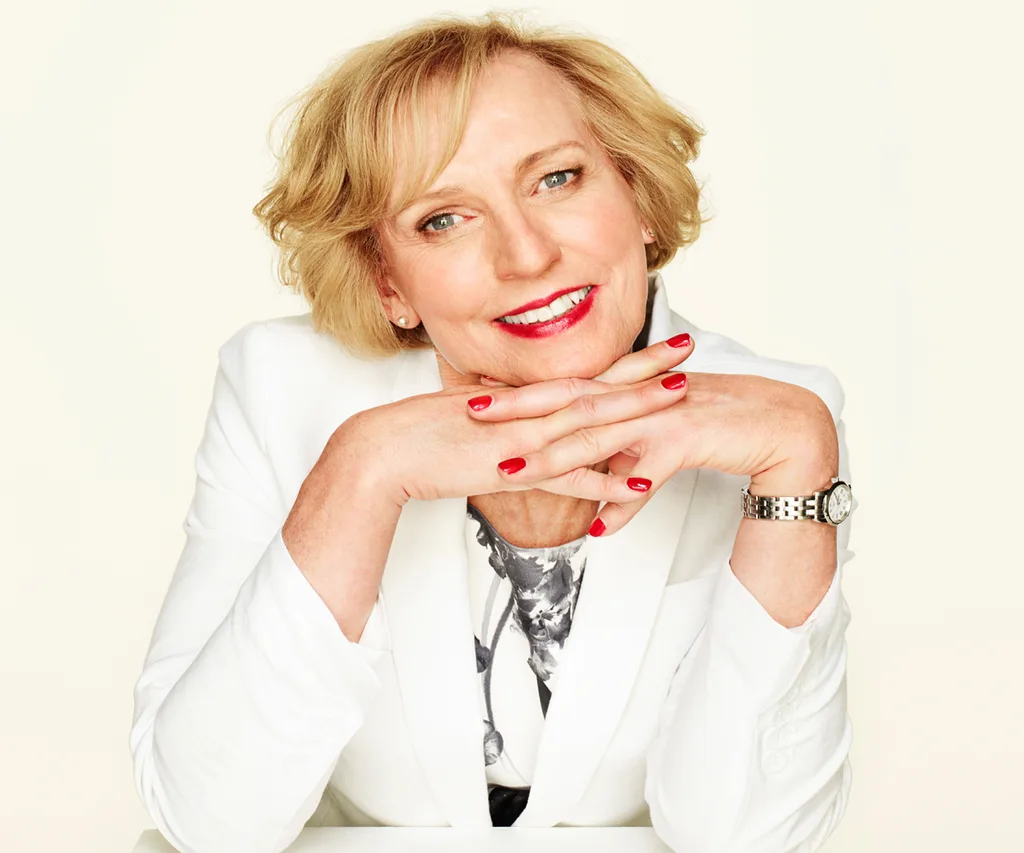
“I want to live as female, to the fullest extent possible, for however long I have left,” says Cate McGregor.
A version of this story first appeared in the January 2014 issue of The Australian Women’s Weekly and online in 2015. It was last updated in May 2018


